Doctor of Chiropractic, Dr. Alexander Jimenez looks at high heels at what they do to the back.
Ladies, ever wonder why you suffer from regular bouts of lower back pain? Achy hips? How about crazy tight leg muscles? Don’t blame it on your cycling class, or too many squats or, the trainer you only see once or twice a week. Look down. Are you wearing high heels? Bingo! You’ve heard high heels are bad for you. But it’s not just because they cause all kinds of pain and trauma to your feet. High heels are also messing up your physical fitness. They throw you out of proper postural alignment causing your joints and spine to take on more wear and tear, which means aches and pains.
Is it possible to still look rockin’ and save your joints? My suggestion is more Athleisure-wear. I know some fashion hard-liners say, no way will I walk around in yoga pants on a weekday! But we’ve come a long way since those flare-leg, fold-over yoga pants.
Let’s chat for a moment about the evils of high heels.
First there’s the obvious. They make your feet hurt. Blisters, calluses and swelling are par for the course. And pointy toes, fuhgeddaboutit! I’m sure they were invented by someone on the Marquis de Sade’s payroll. Second, they can lead to foot injuries like plantar fasciitis (usually from a bone spur that makes your heels hurt), hammertoes, bunions, and neuromas. Then there’s the domino effect.
Not only do high heels make your feet hurt, but problems with the feet can travel up the leg and cause injuries in the back, knees and hips. Your knees take on extra pressure from the weight being pushed forward onto the balls of the feet. Walking in this position makes your hip flexors and calf muscles short and tight. And it doesn’t stop there. Back problems are incredibly common in women who don’t give up their high heels.
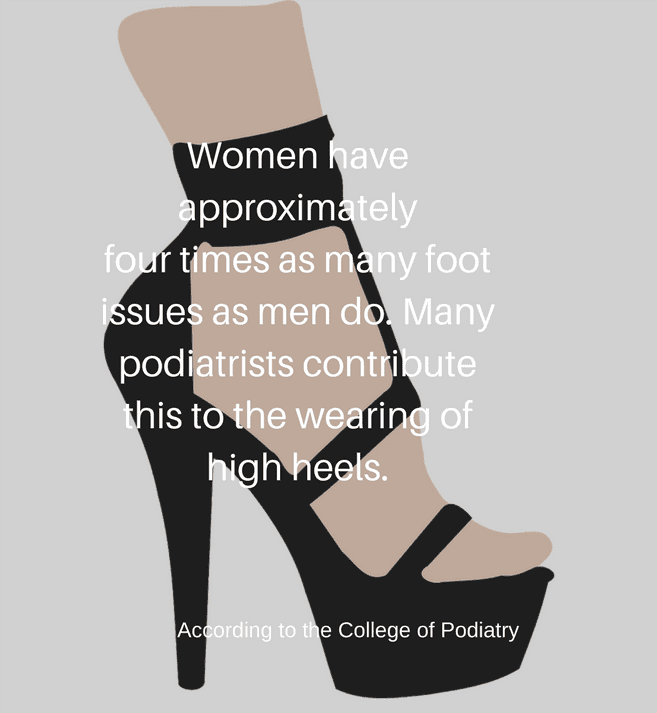
Back Problems are incredibly common in women who don’t give up their high heels
Here’s why:
- Postural changes: The S-curve of your spine has cushiony discs in between the vertebrae that act as a shock absorbers to protect them from stress. Like when you’re bending or jumping. Wearing heels causes the lower back to arch more than normal because the body weight is pushed forward. To compensate, the upper body has to lean back to maintain balance. This puts extra stress on the discs. Spending hours with your body in funky alignment can lead to muscle spasms and back pain. Tight hamstring muscles, which attach to back of the pelvis and lower back, can also make your back ache.
- Anatomical changes: Wearing high heels on a daily, or very regular basis, over years, can actually cause anatomical changes to your body. In addition to the extra strain on your back and knees, the calf muscles can also shorten and the tendons can get tighter and thicker.
And It Can Get Even Nastier If You Get One Of These Spine Injuries:
- Spondylolisthesis: it’s a mouthful, but is a common injury that can happen in the lower back from too much hyperextension (arching the back). It’s when one vertebra slips forward over another.
- Foraminal stenosis: I have this one congenitally and it sucks. This is a spine and nerve issue that occurs when anatomical abnormalities reduce the spaces the nerves travel through as they exit the spinal column. The spaces are called foramina, and when they get blocked, the nerves get squeezed. The pain can radiate through the buttocks and down the legs. Symptoms are shooting pains, numbness, tingling, muscle weakness, spasms and, or cramping.
- Sciatica: The sciatic nerve is the longest one in the body. It runs from the bottom of the lumbar spine all the ways down the legs. When the sciatic nerve gets compressed it causes radiating pain, tingling, numbness and muscle weakness down the leg and can The pain can travel all the way to the bottom of the foot.
What Can You Do? My Case for Athleisure-Wear To Combat Back Pain

It’s time for stuffy office attire to retire. Comfy clothes and flat shoes can be very chic. Have you seen the boards on Pinterest? Thanks to this hopefully permanent fashion style, my jeans and heels spend more time in my closet than on my body. Leggings and cute kicks are my go to’s. Night out? No prob. I reach for my sleek workout leggings, a ruched top or off the shoulder top with some high heel sneaks (they’re wedges so not nearly as bad for you). I also discovered these by Bluprint which I put to the test at 2 huge conventions where I walking and standing for hours on end. The soles made of memory foam – like those beds!
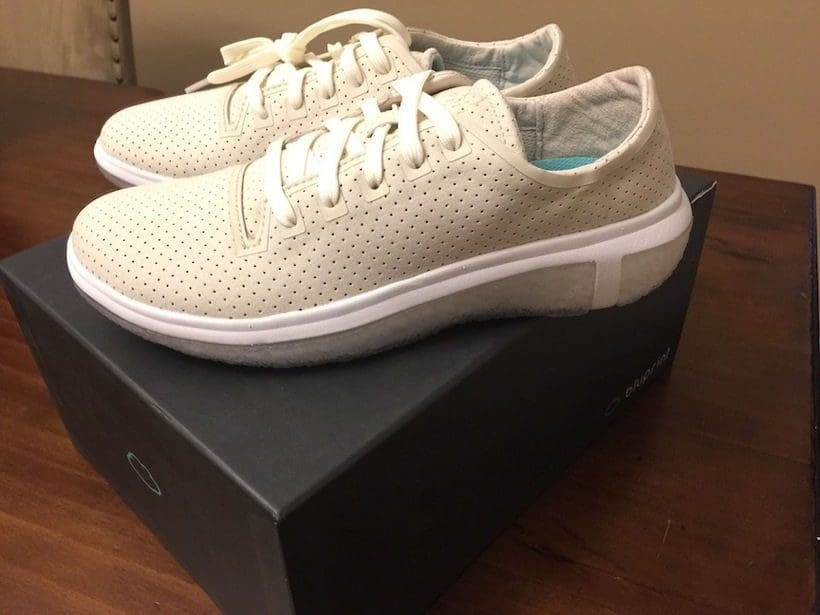
My podiatrist friend, Steven Rosenberg, DPM has been preaching the need for comfy shoes to his female clients for years. (Fortunately for his practice, not everyone listens!) Dr. Steve says, wearing shoes designed more for comfort can help you live more pain-free. “Because comfort shoes are made of soft cushiony materials with soft foam innersoles, those are what you should turn to for shopping, walking or standing for long periods of time to avoid blisters, muscle spasms or arch cramps.” He also says to check for arch support in your shoes. If there’s none, you can buy ones to put inside.

Even after reading this, you may still not be willing to give up high heels for good. Me either. I still get glammed up once in a while.
Here Are Some Tips For When You Must:
- Wear them for as little time as possible.
- Try to opt for heels around 2” high
- Steer clear of pointy toes.
- Buy shoes with leather insoles to so your foot doesn’t slide.
- Buy arch inserts or use orthotics to support your arches.
- Vary your footwear so you’re not wearing high heels every day.
- Gradual or lower slopes are a little better, go for platforms or wedges instead of stilettos
- Thicker heels are better than spiky heels
- Stretch and strengthen the overworked muscles.
Here’s How:
- Stretch your leg muscles and hip flexors before and after wearing heels. For the calves, stand on a step and let one heel hang down until you feel a stretch.
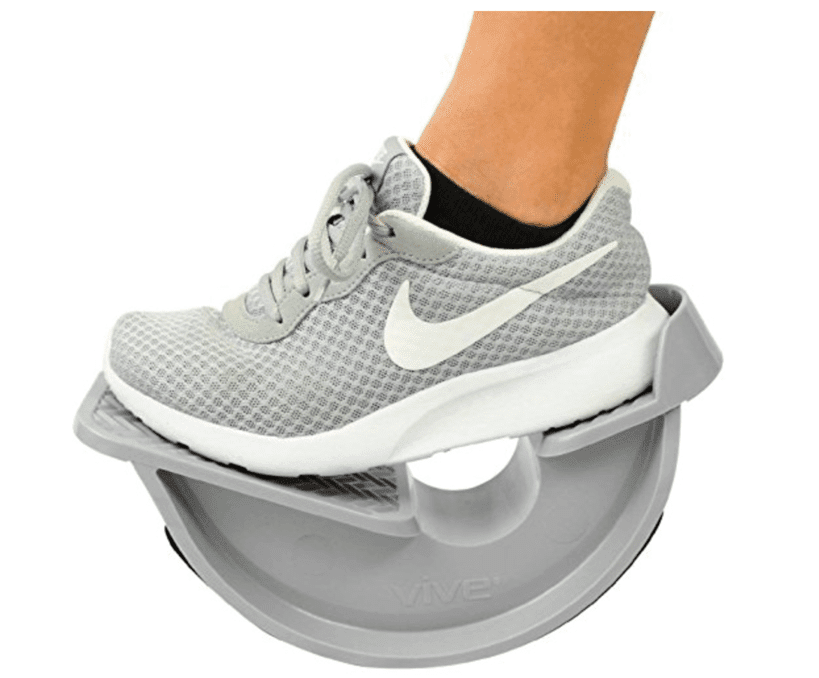
Try this convenient device, the foot rocker by Vive. It stretches the calf and the sole of the foot relieving pain from plantar fasciitis.
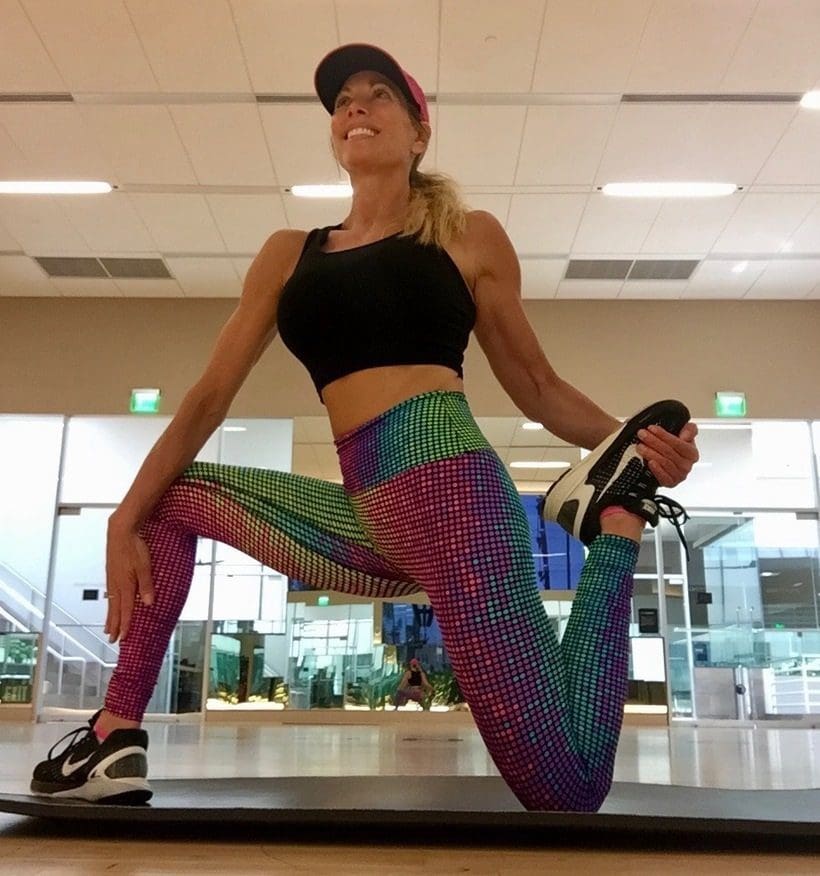
- Front of the hip and thigh stretch for before and after wearing high heels
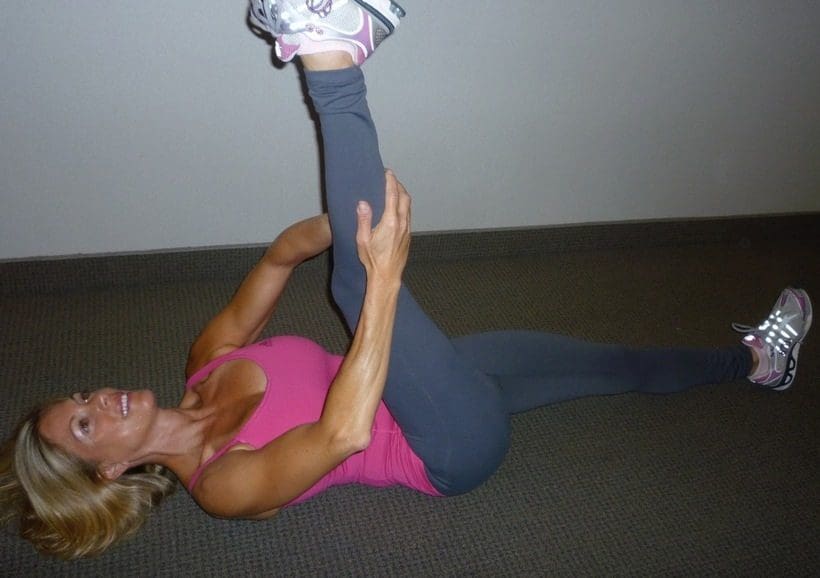
- Hamstring stretch for before and after wearing high heels
- Massage and stretch the muscles in the soles of your feet. Roll your foot on a golf ball before and after wearing heels and, get regular foot massages.
- Strengthen and increase the range of motion in your ankles and feet. Put a rag on the floor. Using your foot, write the letters of the alphabet. Also put a bunch of marbles on the floor. Pick one or a few of them up using just your foot. Put them down about 6 inches away without lifting your foot off the floor. Try that 10 times. If you don’t have marbles, you can do it with a hand towel.

So next time you’re shopping for shoes, think about your foot fitness first. Look for fashion that keeps you closer to the ground and that will hopefully keep you farther away from the doctor.





